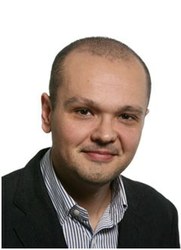Antonio Garcia-Garcia

Dr Antonio Garcia-Garcia
EPSRC Advanced Research Fellow
Office: 540a Mott Bld
Phone: +44(0)1223 3 37258
Email: amg73 @ cam.ac.uk
Personal web site
TCM Group, Cavendish Laboratory
19 JJ Thomson Avenue,
Cambridge, CB3 0HE UK.
Research Group

Research
I am theoretical physicist with research interests ranging from materials design to far-from equilibrium dynamics and holographic dualities in condensed matter physics. My current research is focused on three problems: optimization of materials properties, like superconductivity, by different tools including nano-engineering design, the identification and description of novel phases of out of equilibrium quantum matter and the description of strongly coupled systems by holographic dualities. This research involves several interdisciplinary collaborations with experts in high energy, cold atom physics, materials and nano science.

In Plain English
My research aims to set the theoretical basis for the engineering of enhanced and novel forms of superconductivity by nano-scale control and out of equilibrium effects. This is an important step toward the establishment of the new field of research of on-demand superconductivity whereenhanced experimental control leads to nano-design of materials with high tunable properties.
Featured Publications
- A thermal quench induces spatial inhomogeneities in a holographic superconductor Journal of High Energy Physics 2014 096 (2014)
- Dissipation in a simple model of a topological josephson junction. Phys Rev Lett 112 247001 (2014)
- Interplay of classical and quantum capacitance in a one-dimensional array of Josephson junctions P Ribeiro and AM Garcia-Garcia, Phys. Rev. B 89 064513 (2014)
- Size effects in superconducting thin films coupled to a substrate Phys. Rev. B 89 064508 (2014)
- Strong enhancement of bulk superconductivity by engineered nanogranularity Phys. Rev. B 90 134513 (2014)
- Destruction of Long-range Order by Quenching the Hopping Range in One Dimension arXiv:1403.1739
- Far-from-equilibrium coarsening, defect formation, and holography arXiv:1407.1862